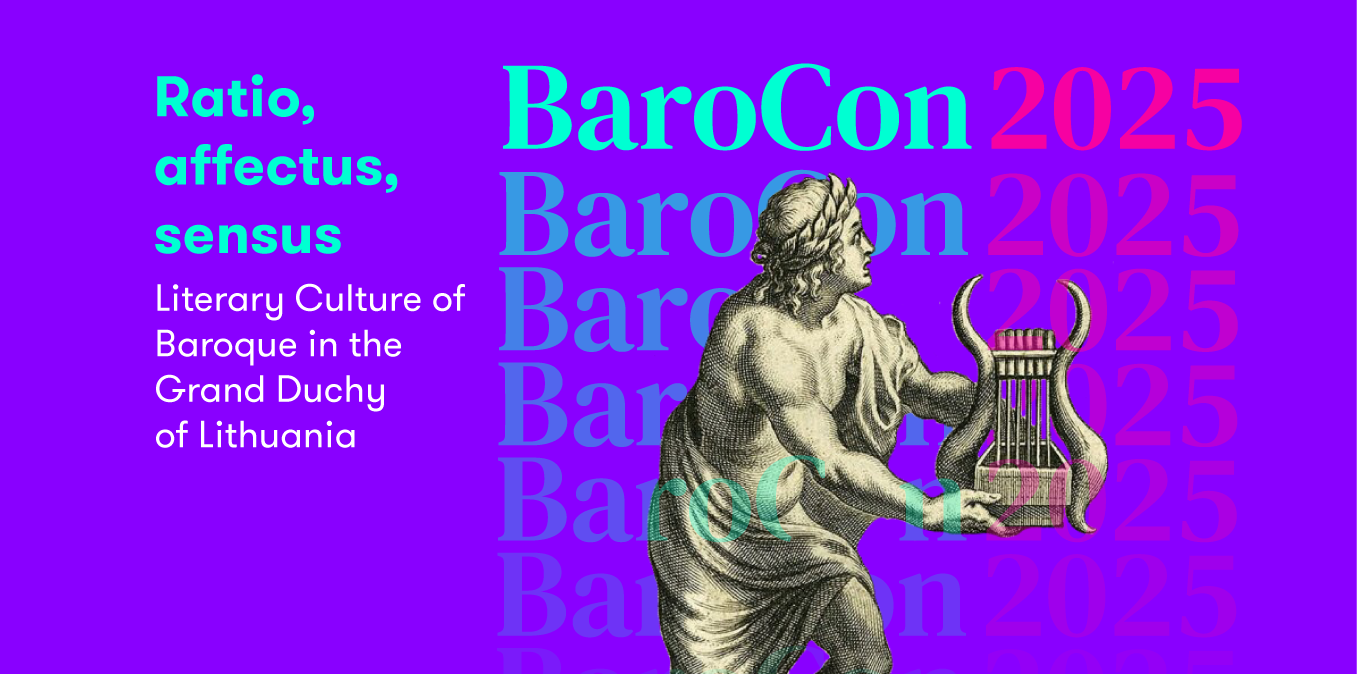Ratio, affectus, sensus: Literary Culture of the Baroque in the Grand Duchy of Lithuania
In 2025, we will commemorate the 400th anniversary of the first publication of Matheus Casimirus Sarbievius' most famous Latin poetry collection 'Lyricorum libri tres' (1625). This has led to 2025 being declared the Year of Baroque Literature in Lithuania. The eminent Jesuit neo-Latin poet of the Polish-Lithuanian Commonwealth, Sarbievius, has been hailed as the Christian Horace and the Sarmatian Horace. His theoretical thoughts on poetry and rhetoric are still highly regarded and have inspired new research on other concurrent themes and authors. This anniversary provides an opportunity to explore the extent and diversity of Baroque literary culture, which has seen a surge of interest in recent decades, both in the academic world and in popular culture. Therefore, the Institute of Lithuanian Literature and Folklore, together with the Faculty of Philology of Vilnius University, is organising an international academic conference "Ratio, affectus, sensus: Literary Culture of the Baroque in the Grand Duchy of Lithuania" on 25-27 September 2025 in the baroque city of Vilnius.
The aim of the multidisciplinary conference is to stimulate discussion on the literary culture of the "long seventeenth century" (from the end of the 16th century to the middle of the 18th century) in the Grand Duchy of Lithuania. This historical period, associated with dramatic changes and a general cultural crisis, is often described in contradictory terms and in constant tension between reason and senses, rigid structure and passions, classifications and impressions, etc. By embracing this contradiction, we invite an exploration of the theme in question through the lens of this dynamic interplay between reason (ratio), emotion (affectus) and the senses (sensus), which can be perceived in various genres of the period, such as poetry, biography, hagiography, rhetoric, private and public correspondence, and so on. The importance of the modern approach lies not only in what it can reveal about the Baroque in the Grand Duchy of Lithuania, but also about subsequent and contemporary literary culture, as scholars have demonstrated the continuing influence of a 'Baroque spirit'.
Event location
25–26 September the conference will take place at V. Krėvė (118) auditorium, Faculty of Philology
27 September the conference will take place at the Church Heritage Museum, Šv. Mykolo g. 9 (entrance from Maironio g. "Arkangelo konferencijų centras")
Keynote speakers

Ona Dilytė-Čiurinskienė
Senior Researcher, The Institute of Lithuanian Literature and Folklore
Prof Stephen Harrison
Professor of Latin literature, University of Oxford
Fatima Eloeva
Baroque Stylization and Geographic Myth-Making: Kristina Sabaliauskaitė and Ismail Kadare’s Reshaping of Cultural Space
Fatima Eloeva
Vilnius University
Baroque Stylization and Geographic Myth-Making: Kristina Sabaliauskaitė and Ismail Kadare’s Reshaping of Cultural Space
Baroque literature, with its emphasis on stylization, spectacle, and symbolic transformation, provides a unique lens through which to analyze the reshaping of historical and geographic realities in modern historical fiction. This paper explores the Baroque-infused strategies of Kristina Sabaliauskaitė’s Silva Rerum cycle and compares them to the mythic and geopolitical transformations of Albania in the works of Ismail Kadare. Sabaliauskaitė meticulously reconstructs the Grand Duchy of Lithuania (GDL) through an aestheticized Baroque framework, emphasizing theatricality, allegory, and the intellectual refinement of the period. By selectively amplifying elements of Vilnius’ cultural and artistic life, she presents an image of the GDL that aligns it more closely with Western European Baroque traditions. Her novel does not simply recreate history; it curates it, enhancing Lithuania’s role within the broader European intellectual and artistic sphere. In contrast, Ismail Kadare employs a different form of geographic and historical reshaping—one that subtly transforms Albania’s natural landscape to make it appear more North-European. By modifying the descriptions of Albania’s mountains, climate, and atmospheric conditions, Kadare creates a mythic, austere, and almost Nordic Albania. This transformation serves both a stylistic and political purpose, reinforcing his themes of isolation, historical burden, and Albania’s complex position between East and West, particularly under Enver Hoxha’s regime. By juxtaposing these two authors, this paper examines how literary stylization—whether through Baroque aesthetics or geographic myth-making—reshapes historical and cultural identity. Ultimately, the comparison highlights how modern historical fiction continues to employ Baroque techniques of excess, illusion, and dramatic reimagination to construct alternative visions of the past.


